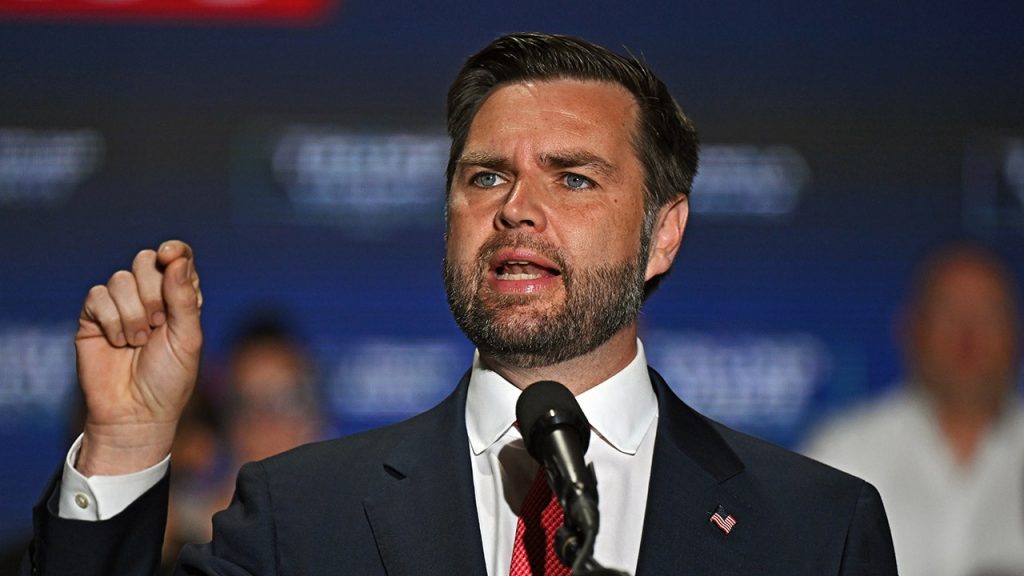Vice President JD Vance faced protests from pro-Ukrainian demonstrators while out for a walk with his three-year-old daughter. The incident, which occurred over the weekend, saw protesters following Vance and expressing their concerns vocally. In response to the anxiety caused to his child, Vance engaged in a conversation with the protesters, resulting in an exchange that sparked significant discussions about governmental stances on international aid and the ongoing conflict in Ukraine.
| Article Subheadings |
|---|
| 1) Incident Details and Protesters’ Actions |
| 2) Conversation with Protesters |
| 3) Context of U.S.-Ukraine Relations |
| 4) Reactions Following the Encounter |
| 5) Implications for Future Political Exchanges |
Incident Details and Protesters’ Actions
The incident occurred while Vice President JD Vance was on a casual walk with his young daughter. Vance reported that a group of protesters, signaling their support for Ukraine with chants of “Slava Ukraini,” were following them, which caused his daughter to feel anxious and scared. This show of public dissent against Vance is emblematic of the heightened tensions surrounding his recent political decisions, particularly those affecting foreign policy regarding Ukraine. The supporters of Ukraine are passionate about the ongoing conflict, and such direct confrontation reflected their frustration with U.S. leaders perceived to be withdrawing support.
Conversation with Protesters
In an effort to alleviate his daughter’s distress, Vance opted to engage with the protesters in conversation. He stated on social media that he hoped to exchange words for the sake of his child’s comfort. He characterized the dialogue as mostly respectful, though he called out the act of pursuing a child as part of a political protest as inappropriate. This incident highlighted the complex relationship between personal life and public duty, as Vance attempted to strike a balance between addressing the protests and caring for his family. The conversations that ensued might not have resolved underlying issues but demonstrated a willingness to engage at a level that many politicians might avoid in public settings.
Context of U.S.-Ukraine Relations
The confrontation is underscored by recent geopolitical developments, particularly concerning U.S. relations with Ukraine. In the days preceding the protest, there had been significant fallout within political circles following an Oval Office meeting in which Trump, Vance, and Ukrainian President Volodymyr Zelenskyy engaged in a heated exchange. Vance and Trump had criticized Zelenskyy for perceived ingratitude regarding U.S. support, as funding for Ukraine was recently halted. This context likely fueled the protesters’ urgency and frustration directed at Vance during their encounter.
Reactions Following the Encounter
Following the incident, responses from various quarters shone a light on the political implications of Vance’s actions. Social media was rife with opinions; one commentator criticized Vance, equating the emotional impact of being yelled at by protesters with the critical matters of life and death faced by Ukrainians amidst ongoing conflict. This response emphasized a growing sentiment among certain groups that leaders carrying out significant policy changes should be held accountable for their decisions on the global stage. Moreover, Vance’s experience reflects a broader trend where public officials are increasingly exposed to direct dissent, pushing back against their policies while they go about their daily lives.
Implications for Future Political Exchanges
Vance’s experience highlights the broader implications for political discourse within the United States, particularly regarding international relations and domestic treatment of foreign policy issues. As political tensions rise over contentious matters like aid to Ukraine, officials may find themselves confronted with vocal responses from constituents. The nature of political protests has evolved, often placing leaders in uncomfortable situations that could impact their effectiveness and approach to governance. It raises questions about how political figures, particularly those embarking on foreign policy roles, will navigate the personal ramifications of their policy decisions going forward.
| No. | Key Points |
|---|---|
| 1 | Vice President JD Vance encountered pro-Ukrainian protesters on a walk with his daughter. |
| 2 | His daughter felt anxious during the protest, prompting Vance to engage with the activists. |
| 3 | The backdrop of the encounter involved rising tensions over U.S. funding for Ukraine. |
| 4 | The political fallout from his recent actions further impacted public perceptions of Vance. |
| 5 | Public officials may increasingly face direct protests regarding contentious policy decisions. |
Summary
The incident involving Vice President JD Vance highlights the intersection of personal life and political responsibility amid a charged atmosphere concerning U.S. foreign policy towards Ukraine. The protest serves as a snapshot of the broader discontent regarding political decisions and their real-world implications. As these confrontations become more frequent, the challenge for political leaders will be to navigate public opinion while managing their official duties. This situation forebodes a continuing evolution in political engagement in the United States, especially concerning how officials are perceived by the public.
Frequently Asked Questions
Question: Why were the protesters targeting Vice President JD Vance?
The protesters were targeting Vice President JD Vance due to the recent decision by the U.S. administration to halt funding for Ukraine amid ongoing tensions due to the war, reflecting discontent with his policies.
Question: How did Vice President Vance respond to the protesters following his daughter’s anxiety?
Vance engaged in conversation with the protesters in hopes of reducing his daughter’s anxiety, asserting that the dialogue was mostly respectful but criticized the act of pursuing a child during the protest.
Question: What were the broader implications of the incident for U.S.-Ukraine relations?
The incident underscored the growing tensions in U.S.-Ukraine relations, especially following significant political exchanges highlighting dissatisfaction with Ukrainian leadership, potentially affecting future diplomatic engagements.


